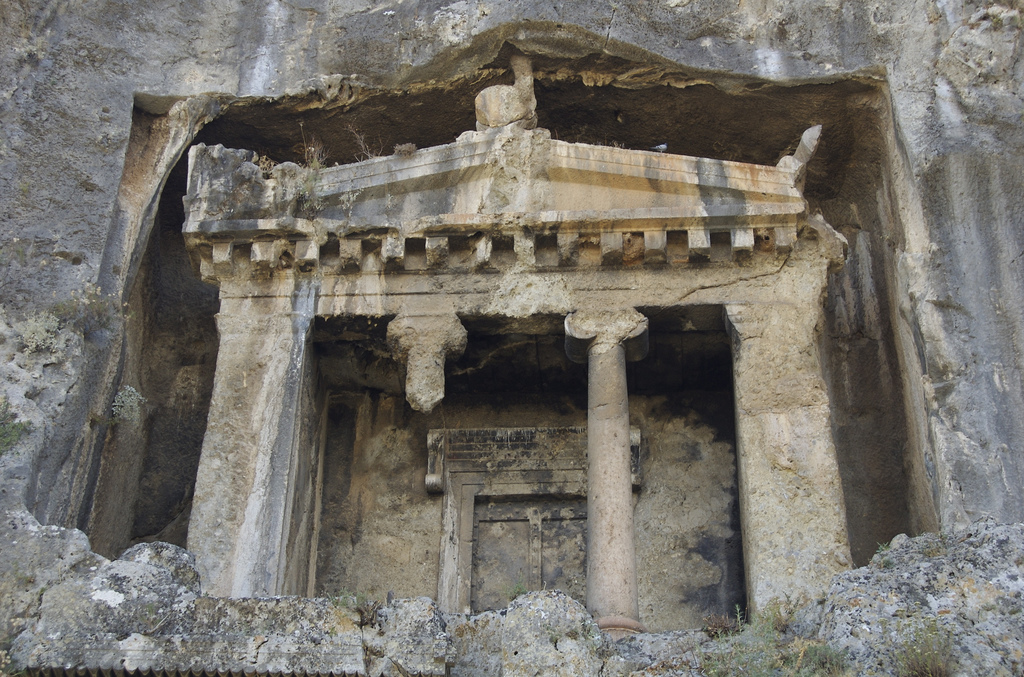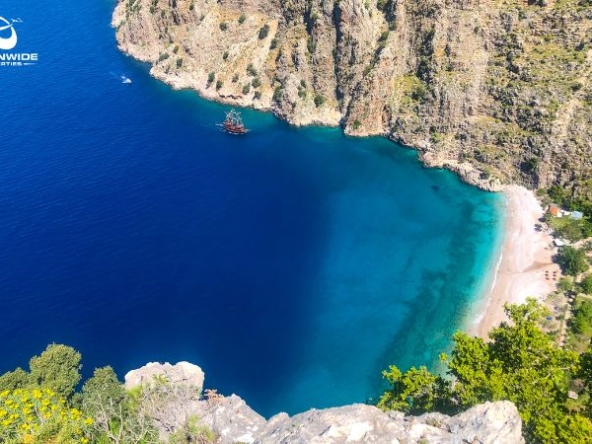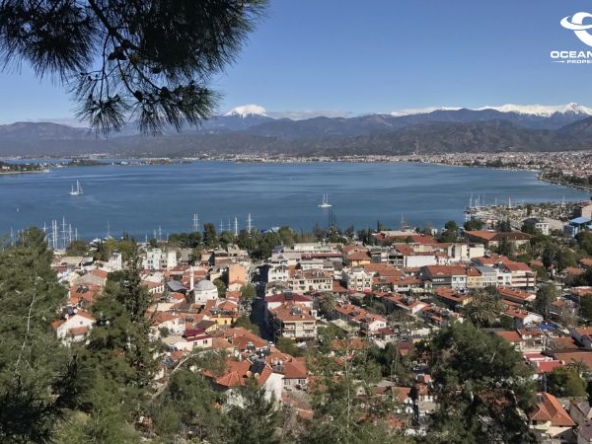Exploring the Tomb of Amyntas and Amyntas Amphitheatre in Fethiye
Introduction:
Nestled in the mountainside on the southern outskirts of modern-day Fethiye in the Muğla Province of Turkey lies the Tomb of Amyntas, a remarkable Lycian rock-hewn tomb that whispers tales of ancient civilizations and the mysteries of bygone eras. As you embark on this historical journey, you’ll be transported back to 350 BC, when the Lycians, residents of the Achaemenid Empire’s satrapy, left their mark in the form of an awe-inspiring tomb.
Amyntas: A Journey Through Time:
The Tomb of Amyntas stands proudly on the site of ancient Telmessos, once a bustling city in the heart of Lycia. Today’s Fethiye, an embodiment of the Roman and Hellenoroman legacies, houses this extraordinary relic in the base of the mountains that cradle the city. Built with grandeur and precision, the tomb pays homage to Amyntas, the son of Hermagios, as etched in a Greek inscription on its side.
The Lycians, a united confederation of independent city-states, including Telmessos, crafted this testament to their craftsmanship and reverence for their history. Step by step, you’ll unravel the intricacies of a civilization that once thrived under the rule of the Persian Empire. The tomb’s Greek inscription, “Amyntou tou Ermagiou,” whispers the legacy of a people tightly knit in the fabric of Lycian identity.
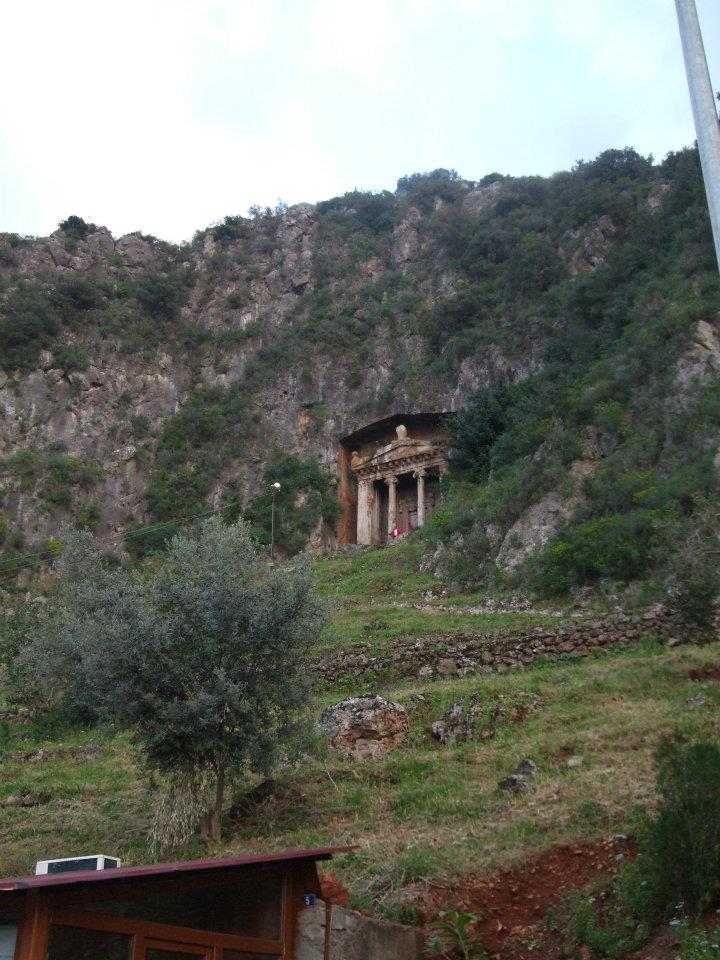
A Name of Distinction:
In the annals of history, it’s crucial not to confuse Amyntas of the Tomb with the Macedonian king, Amyntas I of Macedon. Instead, Amyntas here could well be the descendant of the King maker, Cyrus the Great’s loyal General Harpagos. This formidable figure, who ascended to the position of satrap of Lycia, marked the inception of the Harpagid Dynasty, a tribute to his pivotal role in Cyrus’s conquest.
Exploring the Amyntas Amphitheatre:
Located in the hills above Fethiye, the ancient city of Amyntas unveils a fascinating archaeological site that provides a glimpse into the rich history of the region. One of the most impressive structures at the site is the ancient amphitheatre, a marvel from the 2nd century AD Roman era. This grand structure, with seating for up to 5,000 spectators arranged in a semi-circular fashion around the central arena, was once a hub for gladiator fights, theatrical performances, political rallies, and even mock sea battles.
Today, visitors can explore the ruins of the amphitheatre, imagining the grandeur of events that once unfolded within its walls. Despite the passage of centuries, the central arena and outer walls of the amphitheatre still stand, preserving the scale and magnificence of this historical gem.
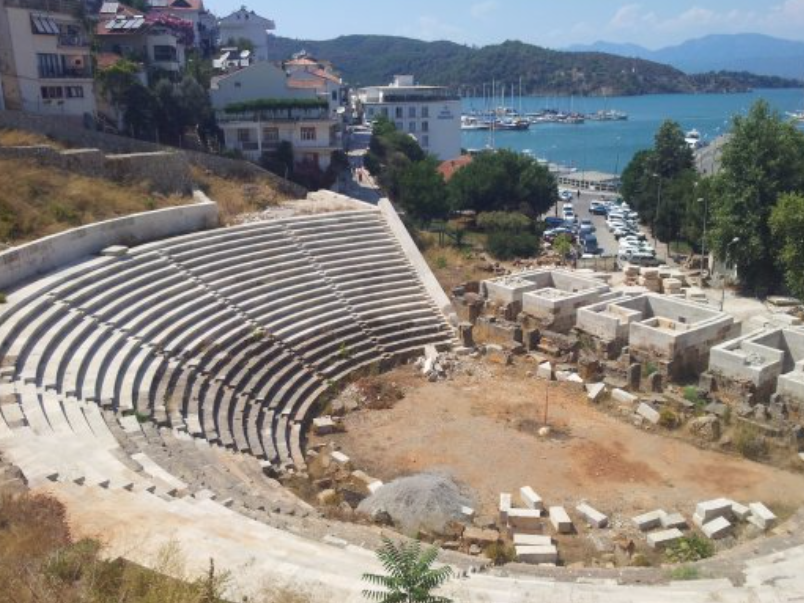
Beyond the Amphitheatre:
The Amyntas site isn’t limited to the amphitheatre alone; it includes a variety of other captivating ruins. A temple, a basilica, and ancient tombs dot the landscape, providing a comprehensive view of the city’s historical and cultural significance. Exploring the surrounding hills and valleys reveals additional archaeological wonders and stunning views of the landscape, making it an enriching experience for history enthusiasts and casual visitors alike.
Conclusion:
The Tomb of Amyntas and the Amyntas Amphitheatre in Fethiye offer more than a mere glimpse into the past – they provide a portal to ancient civilizations, offering insights into the lives, legacies, and cultural richness of the Lycian people. As you stand in the shadow of the tomb, surrounded by the beauty of Fethiye and the Aegean region, let the whispers of ancient inscriptions guide you through a journey that transcends time. Amyntas beckons, inviting you to connect with a world shaped by empires, dynasties, and the enduring spirit of a people who once called this mountainous landscape home.

